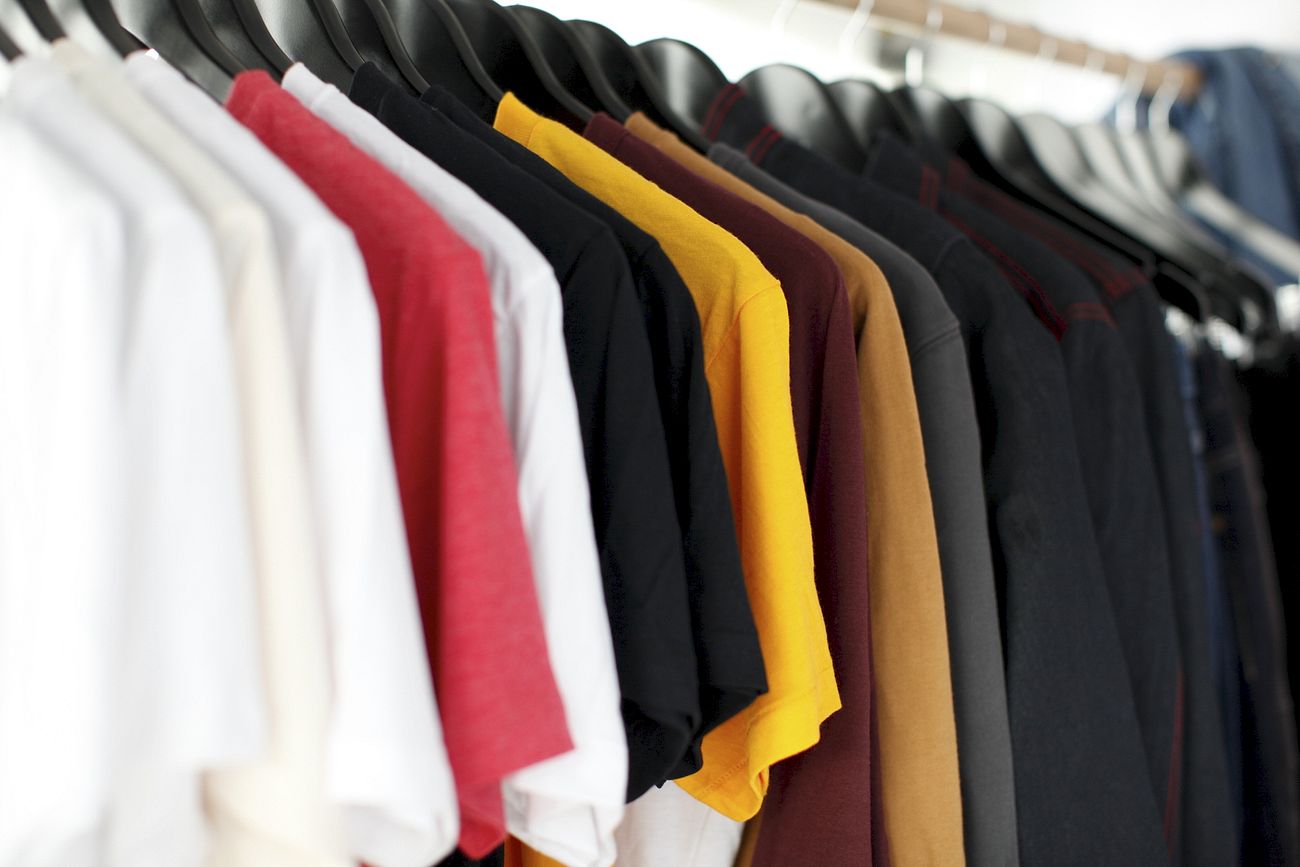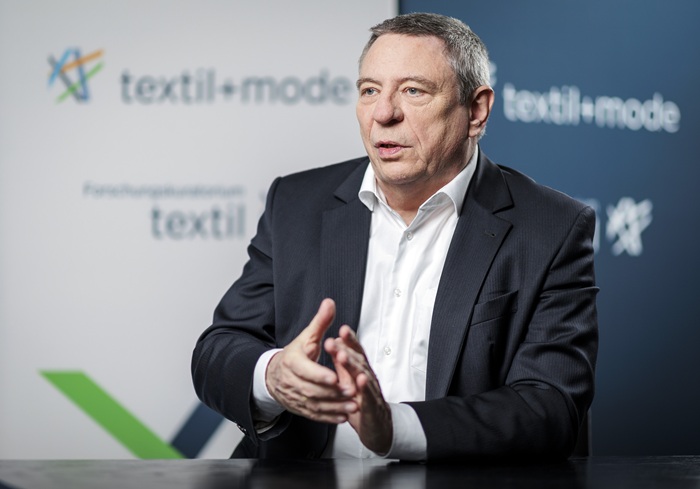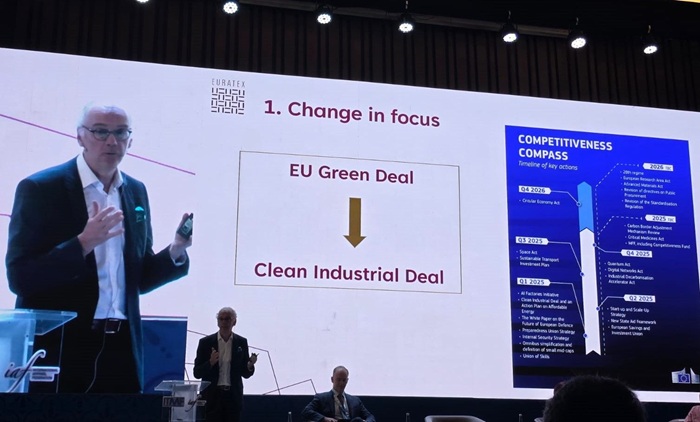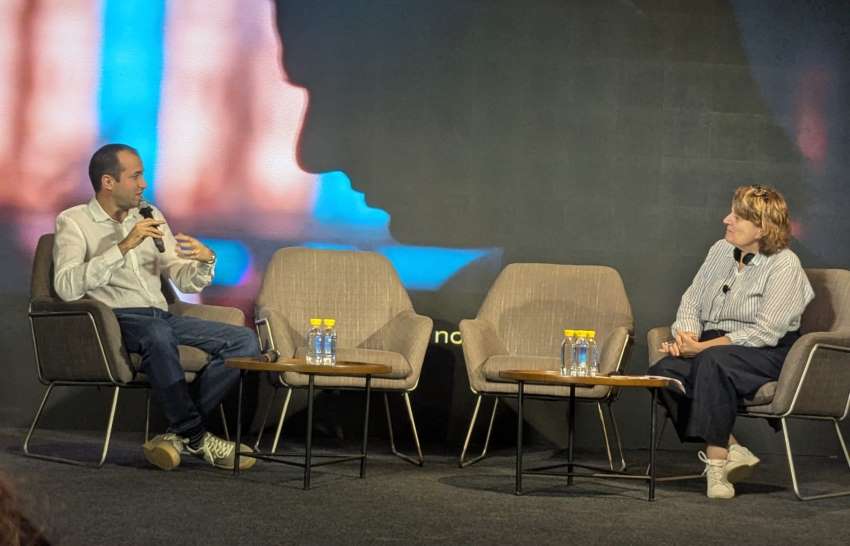FW

For years, a statement has been echoed across fashion panels, sustainability forums, and viral social media posts: “We already have enough clothes on earth to dress the next four to seven generations.” It’s a catchy claim, easy to remember and powerful enough to spark conversations about fashion’s overproduction problem. But like many soundbites, it doesn’t stand up to scrutiny. When the math is done, the numbers reveal a different truth one that highlights not an abundance of clothing, but the fragility of garments and the urgency of rethinking how we produce, use, and value them.
The numbers don’t add up
At first glance, the claim seems plausible. Global clothing production currently stands at 150 billion garments annually, as per industry estimates. That is nearly 20 pieces for every single person on earth each year. But does this mean we can simply stop producing and still clothe humanity for generations to come? The reality is far more complex.
Analysts calculate that to sustain just one global generation roughly 8 billion people for their lifetimes, we would need around 5 trillion garments. Stretching that across four to seven generations translates to almost 20-35 trillion garments. At today’s rate of production, that equals about 33 years of nonstop manufacturing not the supposed “excess” that headlines suggest.
Table: Clothing production vs generational needs
|
Figures |
Value |
|
Annual global garment production |
150 billion |
|
Estimated garments needed for one generation (8B people) |
5 trillion |
|
Estimated garments for 4–7 generations |
20–35 trillion |
|
Equivalent years of current production |
33 years |
“The math makes it very clear the idea that we’re already sitting on enough stock to last multiple generations is a myth,” says Hélène Dubois, a sustainability researcher at the London College of Fashion. “Garments degrade, fashion is unevenly distributed, and consumption patterns vary dramatically across regions. Numbers don’t lie.”
The reality of clothing longevity
Even if we did have those trillions of garments, there’s another problem: clothes don’t last forever. A cotton T-shirt might survive 30-40 washes before thinning, while polyester fast-fashion dresses often lose shape within a year. On the other end of the spectrum, a handwoven wool coat or a tailored denim jacket might last for decades if cared for properly.
On average, research shows that most garments are worn 50-100 times before disposal. In reality, fast fashion trends and declining fabric quality mean that many clothes never reach even half that potential. Fashion entrepreneur and sustainability advocate says, “Durability is the missing link in the conversation,” says Anita Dongre. “We obsess over recycling and resale, but unless we design with longevity, the cycle keeps spinning faster.”
Few industry voices have challenged the “enough clothes” myth as effectively as Patrick Grant, the British designer behind Community Clothing. Grant built the company around seasonless, well-made essentials jeans, T-shirts, coats produced locally in UK factories using responsibly sourced fabrics. His model not only creates sturdy garments designed for repeated wear, but also sustains British manufacturing skills at a time when global supply chains dominate.
“The myth was useful as a wake-up call,” Grant has said in interviews. “But the truth is, most of what we produce isn’t built to last, and most of what we consume isn’t treated with respect. We need to shift both mindsets.” Community Clothing’s sales data shows that customers who invest in higher-quality basics tend to extend garment use significantly, often doubling or tripling the average number of wears compared to fast-fashion items.
Focus on quality, wearability, and transparency
The sustainability conversation often zeroes in on recycling technologies or resale markets. But experts agree that the most immediate solution is deceptively simple: make clothes that last. This means focusing on:
Quality: durable fabrics, reinforced stitching, timeless silhouettes.
Wearability: versatile designs that fit across occasions and seasons.
Transparency: supply chains that consumers can trust.
Table:
|
Garment type |
Number of wears |
|
Fast-fashion polyester dress |
10–30 |
|
Standard cotton t-shirt |
30–50 |
|
Mid-quality denim jeans |
70–100 |
|
Tailored wool coat |
200+ |
“If every garment produced today lasted twice as long, the fashion industry’s footprint could be cut almost in half,” notes Ellen MacArthur Foundation’s 2023 Circular Fashion Report.
Beyond the myth
The viral claim that “we already have enough clothes” may have been effective in sparking outrage, but it obscures a more urgent truth: we don’t have too many clothes, we have too many poorly made clothes. The difference matters. Piles of discarded fast fashion in Ghana’s Kantamanto market or Chile’s Atacama Desert don’t represent abundance; they represent inefficiency and waste. As brands, policymakers, and consumers grapple with fashion’s environmental toll, the real challenge lies not in reducing the sheer number of garments alone, but in extending their value, wear, and life span.
Thus the myth of excess clothing is just that a myth. What the world truly needs is a shift in perspective: from disposable trends to long-lasting essentials, from opaque supply chains to transparent practices, and from passive consumers to active stewards of our wardrobes.
“Fashion is not about having enough clothes,” says Grant. “It’s about having the right clothes that last, that matter, and that we love.” If the industry embraces that mindset, the future of clothing won’t be measured in trillions of garments, but in billions of better ones.

The European Union has officially adopted its highly anticipated Extended Producer Responsibility (EPR) law for textiles, a groundbreaking measure that will fundamentally change how fashion brands operate across the continent. The new directive mandates that brands and retailers selling in the EU will now be responsible for the full lifecycle of their products, from design to end-of-life waste management.
The legislation comes as a direct response to Europe's growing textile waste problem. Annually, the EU generates an estimated 12.6 million tonnes of textile waste, with clothing and footwear alone accounting for 5.2 million tonnes, or about 12 kg per person. Less than 1 per cent of all textiles worldwide are currently recycled into new products, with the vast majority ending up in landfills or being incinerated. This new law aims to close that loop, forcing the fashion industry to confront its linear take-make-dispose model.
A new financial reality for fashion brands
Under the new EPR framework, fashion companies must now cover the costs associated with collecting, sorting, and recycling their discarded garments. This financial obligation is expected to drive significant changes in product design and material sourcing. The law introduces a system of eco-modulated fees, meaning brands that design their products for durability, repairability, and recyclability will pay lower fees. This creates a powerful economic incentive to move away from low-quality, fast fashion items and invest in more sustainable, circular business models.
The EU has set a clear timeline for implementation:
• 20 months from the law's entry into force for member states to transpose the rules into national legislation.
• April 2028 as the deadline for EPR schemes to be fully operational across all member states.
This staggered rollout means brands will face a complex, country-by-country compliance landscape initially, including navigating a patchwork of fees and reporting obligations. The legislation also establishes a mandatory producer register, which will bring unprecedented transparency to the industry by requiring brands to disclose the total volume of clothing they place on the market each year.
Table: Selected examples of EPR implementation in EU member states
|
Country |
Scheme status |
Mandates & targets |
|
France |
Fully Operational since 2007 (Refashion) |
Target: Collect 50% of textiles by 2022; 95% of collected textiles to be reused or recycled. |
|
The Netherlands |
Operational since July 2023 |
Target: 50% recycling and 20% reuse of textiles by 2025; increasing to 75% recycling and 25% reuse by 2030. |
|
. |
Major retailers like Zara and H&M launched a pilot take-back scheme in April 2025 to prepare for the new regulations. |
|
|
Sweden |
Implementing in 2025 |
Target: 70% reduction in textile waste by 2028; 90% of collected waste prepared for reuse or recycling from 2028 onwards. |
.
The rise of circular fashion models
While the new law presents challenges, it also creates opportunities for brands to innovate. Companies that have already adopted circular business models stand to benefit from the new regulations.
Patagonia, for instance, has long championed its Worn Wear program, which encourages customers to repair, reuse, and recycle their products. Similarly, Eileen Fisher's Renew program takes back used garments and transforms them into new designs. These examples demonstrate that EPR can be both environmentally responsible and economically viable.
And the Dutch denim brand Mud Jeans pioneered a ‘lease a jeans’ model. The company leases jeans to customers, who can return them after use to be recycled into new pairs. Mud Jeans has also focused on design for circularity, replacing traditional leather patches with eco-friendly prints to simplify the recycling process. The new EU law is expected to increase this shift, encouraging widespread adoption of similar take-back schemes, repair services, and recycling infrastructure. The move signals the end of business as usual for the fashion industry and marks a pivotal step toward a truly circular economy.
A major four-year research program led by North Carolina State University shows, 100 per cent Merino wool base-layer garments offer superior thermal comfort and performance benefits for athletes.
Focusing on dynamic, ‘stop-go’ sports like cycling, rock climbing, hiking, and golf, the study finds, Merino wool's unique properties help athletes maintain thermal equilibrium during both intense exertion and rest. This concept is called dynamic breathability.
Unlike traditional synthetic performance wear, Merino wool helps wearers avoid the unpleasant sensation of after-chill, which is common in outdoor sports when activity slows down. By maintaining a stable temperature, wool requires the body to do less work to stay comfortable, allowing athletes to conserve energy and focus on their activity. The research found that while all fibers performed similarly during the active phase of a workout, only wool performed well during both the activity and rest phases - a critical advantage for dynamic sports.
Merino wool’s unique dual-layer structure - hydrophobic on the outside and hydrophilic on the inside - allows it to absorb up to one-third of its weight in moisture vapor without feeling wet. This efficient moisture transport stabilizes the microclimate between the garment and the skin. The study confirms, Merino wool maintained greater thermal comfort and minimized after-chill better than other fibers. Compared to polyester, wool showed a 96 per cent better moisture buffering; it was 45 per cent better than cotton and 26 per cent better than viscose.
According to John Roberts, Managing Director, Woolmark, the research demonstrates how wool ‘responds in real time to changing physiological needs’ and keeps athletes in their comfort zone. This breakthrough positions Merino wool as a natural performance fiber backed by science, not just anecdotes. The findings have already generated significant interest from leading sportswear brands looking to design apparel that genuinely enhances wearer performance.
A circular technology company, RE&UP plans to showcase its latest advancements in textile-to-textile recycling at one of the fashion industry’s most influential trade fairs-Première Vision.
Exhibiting in Hall 6, Booth 6S30, RE&UP is highlighting how its next-generation recycling technology allows fashion brands to turn end-of-life textiles into high-quality fibers. The company’s two flagship products, Next-Gen Cotton and Next-Gen Polyester, are engineered to match the performance of virgin fibers and can be seamlessly integrated into major fashion collections.
In addition to its booth, RE&UP is actively participating in the official Première Vision program. On September 16, Andreas Dorner, General Manager joined a panel discussion titled ‘Tech, Feedstock and Flows: Inside the Recycling Value Chain.’ Moderated by Elsa May, the session explored the complexities of textile recycling, from logistical challenges to the potential for truly ‘100 per cent recycled’ fibers.
RE&UP is already showing tangible progress beyond the trade fair. Its next-gen polyester is being used in Only’s recycled tops program, proving that textile-to-textile recycling is both scalable and commercially viable. Furthermore, RE&UP recently became the first company in the textile industry to achieve Cradle to Cradle certified circularity across all its products.
A company enriched by Sanko’s long history in textile innovation, RE&UP aims to reshape the traditional textile paradigm. By transforming textile waste into high-quality raw materials, it is committed to creating a more responsible and technologically advanced future for the fashion industry.
Luxury fashion house Louis Vuitton has expanded its retail footprint by opening its second store at Dubai International Airport. Located in Concourse A, Terminal 3, within Dubai Duty Free, this new store is the brand's second outlet at the airport, highlighting Dubai's importance as a global hub for luxury shoppers.
The store is situated in Zone 5 of Concourse A, right at the elevators that lead to the boarding gates. It features two entrances: one for women's ready-to-wear, leather goods, and travel collections, and a separate one that provides direct access to the men's collections.
The design of the new store reflects Louis Vuitton's heritage while offering an expanded range of products, including shoes and accessories. The exterior facade features two overlapping mesh layers that form the iconic LV flower motif, while the interior is designed to provide travelers with an immersive and elegant shopping experience.
Based on a statement from the Russian embassy, the first round of negotiations for a free trade agreement (FTA) between India and the Eurasian Economic Union (EAEU) is likely to begin in early November.
According to the Russian Embassy in India, in a meeting with Andrey Slepnev, Minister in-charge, Trade, EAEU, Piyush Goyal, Minister of Commerce and Industry, India agreed on an approach under which the first round of negotiations will be held in early November this year and focus on discussing the core aspects of the future deal. The meeting will be preceded by intensive consultations between the Commission, Indian partners, and the EAEU Member States, the ambassy added.
The next round of FTA talks between India and the European Union (EU) is scheduled for October 6-10, a source from the Ministry of Commerce and Industry noted. Almost all issues for the India-EU FTA have been resolved, and an early harvest deal could be possible. This follows a statement last week from Maroš Šefčovič, Trade Commissioner, EU, who said both sides are on track to meet the December deadline for a full FTA.
India is also set to hold new rounds of negotiations for FTAs with Chile and Peru, and will conduct a review of its FTA with the Association of Southeast Asian Nations (ASEAN).
Members of the Swedish textile machinery manufacturers association, TMAS will showcase new developments at the upcoming ITMA Asia + CITME textile machinery exhibition in Singapore from October 28-31. The companies will focus will on sensor-based automation and resource savings.
According to Premler Andersson, Secretary General, TMAS, the push for automation, AI-driven production, and digitalization continues to accelerate with manufacturers seeking to improve efficiency, reduce repetitive tasks for employees, and produce more sustainably. Advanced automation allows for predictive maintenance and real-time quality monitoring, helping companies reduce downtime and boost efficiency.
ACG Kinna Automatic will demonstrate its ‘Complete Process – One Supplier"’approach with a robotic line for manufacturing pillows and duvets. The company will also introduce the new Hector industrial sewing machine, designed for heavy-duty circular and point stitching of filled textile components like garden cushions and mattresses.
Eltex has made a breakthrough with its EyE tension monitoring system. This latest version features electromagnetic brakes that not only detect but also automatically adjust tension in real-time. Additionally, the company's ACT-R unit can significantly reduce selvedge yarn waste from weaving machines, even on older models, informs Michél Gamhov, Sales Engineer, Eltex.
Svegea will highlight its collarette machines. Known for high-speed production of tubular apparel components like cuffs and collars, these machines are designed for durability and energy efficiency, helping customers save on costs while maintaining quality.
Vandewiele Sweden will present its latest X4 yarn feeders with integrated accessory displays for weaving looms. These feeders offer advanced tension control and the ability to transfer settings, allowing for a fast start-up.
Finally, BW Converting will announce a new technology related to its TexCoat G4 spray finishing system, which has been a major success in Asia. The company has sold 35 units in the region over the past two years, with many customers expressing interest in related technologies.
A major global apparel manufacturer, Embee International has adopted Coats Digital's GSDCost solution to improve accuracy, streamline production, and enhance its position in the global market. This move is a part of the company's digital transformation strategy to boost efficiency, improve quality, and strengthen its partnerships with leading global brands.
Headquartered in Ismailia, Egypt, with additional facilities across the country, Embee International employs over 12,000 people. With 4,800 sewing machines and 134 sewing lines, it produces approximately four million units per month for brands like Decathlon, Fruit of the Loom, Calvin Klein, and Walmart.
Before GSDCost, Embee relied on manual, stopwatch-based time studies, which led to inaccurate Standard Minute Values (SMVs) and incorrect costings. This resulted in unrealistic production targets, inefficient line balancing, and delayed delivery deadlines. High production costs and inconsistent quality were also major issues due to non-standardized work methods.
GSDCost gives clear, data-driven view of the company’s production processes, says Sherwin Ricky Jonas, Head - Industrial Engineering & CI, Embee International. It allows the company to measure performance accurately, standardize work methods, and optimize resource use, he adds.
With GSDCost, Embee can now create precise, data-backed labor costings that improve buyer negotiations and reduce SMVs. The company is building a digital SMV library to speed up costing and planning for new styles, while also gaining better production visibility and line balancing. This transformation is helping Embee become a more agile and scalable operation, ready to meet the fast-paced demands of the global apparel market and support long-term growth.
GSDCost provides a common language for manufacturers and brands, helping them meet cost, quality, and delivery targets, adds Diaa Hasham, Coats Digital.
In a joint declaration issued during the Première Vision trade fair, leading European textile and clothing federations warned against the rapid rise of ultra-fast fashion.
Accounting for 4.5 billion imported parcels in the European Union in 2024, ultra fast fashion represents 5 per cent of all clothing sales and a staggering 20 per cent of online sales. This sector continues to grow at an alarming pace.
The federations are warning on several critical consequences. According to them, overproduction of items with a very short lifespan is creating a massive increase in textile waste. It is also adding to the pressure on European small and medium-sized enterprises (SMEs) committed to strict social and environmental standards. The rise of ultra-fast fashion directly threatens local retailers and accelerates the decline of city centers. The platforms involved are engaging in practices that violate European regulations, including VAT fraud and the sale of counterfeit goods.
The federations are urging European institutions and member states enforce the European Customs Code, increase controls and penalties through existing digital regulations (the DSA and DMA), appoint legal representatives to e-commerce platforms, introduce a new tax on small parcels and the abolish the customs duty exemption for parcels under €150, ensure proper collection of VAT on these massive import flows and engage in a dialogue with Chinese authorities to regulate the practices of platforms based there.
Co-signed by major federations including Euratex, UFIMH, and Confindustria Moda, the declaration also encourages European consumers to choose durable products and support companies that invest in quality and innovation.
As the voice of the European textile and clothing industry, Euratex represents around 200,000 companies that employ 1.3 million people. The industry is a key player in the global market, with exports valued at €64 billion. This mobilization highlights the industry's commitment to ensuring a fair and sustainable future for European textile manufacturing.
British heritage brand Barbour and Brazilian fashion brand Farm Rio have teamed up for their new Autumn/Winter 2025 collection. The partnership blends Barbour’s classic British charm with Farm Rio’s bold prints and vibrant, feminine designs. The new collection features three exclusive prints on a range of clothing, footwear, accessories, and outerwear, merging the distinct styles of both brands.
For over 150 years, Barbour has been a staple of the British countryside. Since its founding in 1894, the brand has been known for its quality, purposeful designs, worn by everyone from royalty to rockstars. The new collaboration fuses its contemporary design with the heritage details the brand is famous for.
Brazilian brand Farm Rio has been bringing vibrant, nature-inspired prints to the fashion world for 27 years. Famous for their love of color and ‘borogodó’- that effortless Brazilian charm - they now bring their tropical romance and joyful creativity to the British countryside.
This collaboration brings together the brands’ shared love of nature as a primary inspiration, says Katia Barros, Co-founder and Creative Director, Farm Rio. The collection beautifully balances British heritage, with its classic silhouettes, with the wild beauty of Brazil, expressed through bold colors and spirited motifs, she adds.
Shot in the beautiful Cotswolds, the campaign for this collection features British model and actress Imogen Waterhouse. The imagery showcases tropical elements from Brazil in surreal and intriguing ways, blending British charm with a Brazilian soul.
Barbour brings its trusted design features and signature fabrics to the collection, while Farm Rio adds bright tropical prints and expressive details. Three exclusive prints were created for the collection. These included the Pink Tartan Print that reimagines Barbour’s Scottish heritage tartans with pineapples embroidered on top; The Tropical Print that updates a classic scarf design with a mix of intricate borders, featuring the Brazilian jaguar and pineapple crown alongside delicate florals, and The Pineapple Print, an all-over pattern that features the fruit's crown as a tropical icon. The sophisticated design uses a color palette of golden tones and deep forest greens.
Some of the exclusive pieces from the The Barbour x Farm Rio for AW25 collection include the Barbour Farm Rio Ana-Clara Quilt, Barbour Farm Rio Maria Clara T-Shirt and Barbour Farm Rio Thais Mini Skirt.












